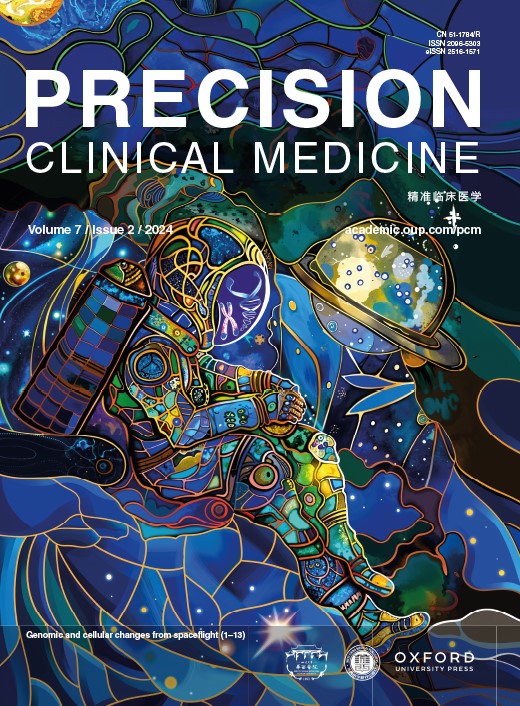Patient-directed vs. fixed-volume PEG for colonoscopy preparation: a randomized controlled trial
IF 5.1
4区 医学
Q1 MEDICINE, RESEARCH & EXPERIMENTAL
引用次数: 1
Abstract
ABSTRACT Background Individualization using different volumes of polyethylene glycol is widely regarded as the optimal solution for bowel preparation, while the patient-directed regimen we propose may serve as a reliable individual solution. This study aimed to assess the efficacy, safety, and satisfaction of bowel preparation with a patient-directed regimen. Methods Patients in the fixed-volume group ingested the same amount of PEG, while those in patient-directed group ingested different amount according to stool consistency or stool water content. Results After filtering by exclusion criteria, 428 individuals in the fixed-volume group and 103 in the patient-directed group were successfully enrolled and analyzed. Eighty-three (80.6%) individuals in the patient-directed group had a reduced polyethylene glycol volume. There was no significant difference in the bowel preparation efficacy between the two groups (90.0% vs. 90.3%, χ² = 0.01; p = 0.918). Patients in the patient-directed group complained of fewer adverse effects (53.0% vs. 36.9%, χ² = 8.655; p = 0.003), especially vomiting (13.6% vs. 1.0%, χ² = 13.304; p < 0.001). Regarding comfort during bowel preparation, the degree of comfort was not significantly different between groups. Furthermore, the willingness rate for further colonoscopy in the patient-directed group was significantly higher than that in the fixed-volume group (90.3% vs. 77.1%, χ² = 8.912; p < 0.05). Multivariable logistic regression analysis showed that the body mass index served as an independent factor impacting quality of bowel preparation with the patient-directed regimen (OR 1.16, 95% CI 1.00–1.34; p = 0.043). Conclusions Without decreasing the bowel preparation efficacy, the patient-directed regimen increased the safety and satisfaction of bowel preparation and is expected to be a regular and individual solution for bowel preparation. Individuals with a lower body mass index are more likely to undertake this new regimen. Trial registration number ChiCTR1900022072 at ChiClinicalTrials.gov患者导向与固定体积PEG结肠镜准备:一项随机对照试验
背景:个体化使用不同体积的聚乙二醇被广泛认为是肠道准备的最佳解决方案,而我们提出的以患者为导向的方案可能是可靠的个体化解决方案。本研究旨在评估以患者为导向的肠准备方案的有效性、安全性和满意度。方法固定体积组患者摄入相同量的聚乙二醇,而患者定向组患者根据粪便稠度或粪便含水量摄入不同量的聚乙二醇。结果通过排除标准筛选后,固定容量组428例,患者导向组103例成功入组分析。在患者导向组中,83人(80.6%)的聚乙二醇体积减少。两组患者的肠道准备效果差异无统计学意义(90.0% vs 90.3%, χ²= 0.01;P = 0.918)。患者导向组患者抱怨不良反应较少(53.0% vs 36.9%, χ²= 8.655;P = 0.003),尤其是呕吐(13.6% vs. 1.0%, χ²= 13.304;P < 0.001)。在肠准备过程中的舒适度方面,各组之间的舒适度无显著差异。此外,患者指导组进一步结肠镜检查的意愿率显著高于固定容积组(90.3% vs 77.1%, χ²= 8.912;P < 0.05)。多变量logistic回归分析显示,体重指数是影响患者指导方案肠道准备质量的独立因素(OR 1.16, 95% CI 1.00-1.34;P = 0.043)。结论患者导向方案在不降低肠准备效果的前提下,提高了肠准备的安全性和满意度,有望成为一种常规的个体化肠准备方案。身体质量指数较低的人更有可能采用这种新疗法。试验注册号ChiCTR1900022072,登录chicclinicaltrials .gov
本文章由计算机程序翻译,如有差异,请以英文原文为准。
求助全文
约1分钟内获得全文
求助全文
来源期刊

Precision Clinical Medicine
MEDICINE, RESEARCH & EXPERIMENTAL-
CiteScore
10.80
自引率
0.00%
发文量
26
审稿时长
5 weeks
期刊介绍:
Precision Clinical Medicine (PCM) is an international, peer-reviewed, open access journal that provides timely publication of original research articles, case reports, reviews, editorials, and perspectives across the spectrum of precision medicine. The journal's mission is to deliver new theories, methods, and evidence that enhance disease diagnosis, treatment, prevention, and prognosis, thereby establishing a vital communication platform for clinicians and researchers that has the potential to transform medical practice. PCM encompasses all facets of precision medicine, which involves personalized approaches to diagnosis, treatment, and prevention, tailored to individual patients or patient subgroups based on their unique genetic, phenotypic, or psychosocial profiles. The clinical conditions addressed by the journal include a wide range of areas such as cancer, infectious diseases, inherited diseases, complex diseases, and rare diseases.
 求助内容:
求助内容: 应助结果提醒方式:
应助结果提醒方式:


